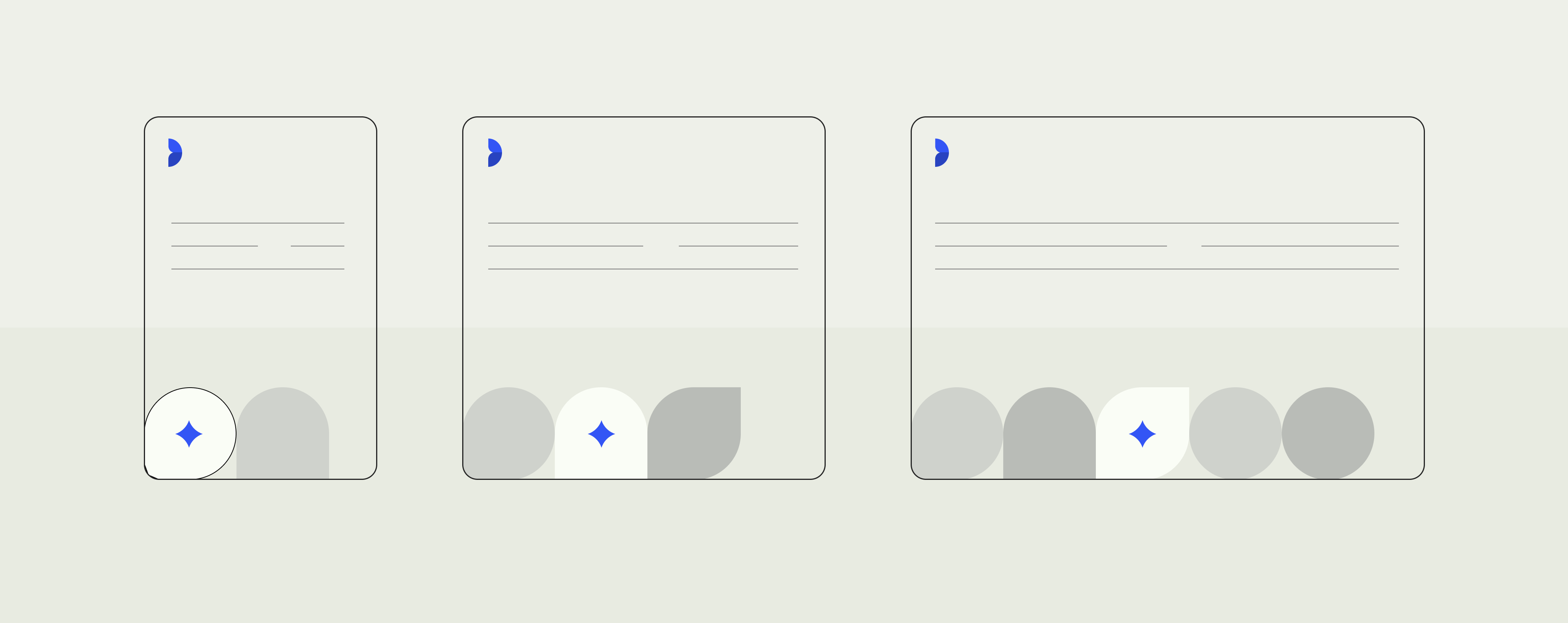Brand consistency: is it really that important?

You’ve heard it a thousand times and it’s still true: brand consistency is the key to long-term success.
In ancient Norse villages, farmers would “brandr” their cattle with a hot iron to set them apart from the village herd. Today, that herd may have transformed into a bustling global marketplace, but the purpose of branding remains the same: to make your mark and stand out from the crowd.
The goal of branding is to build recognizability—and we make that happen through consistency.
In this blog, we’ll explore why brand consistency is key to building a strong reputation and achieving long-term success, along with practical tips to make it happen.
What is brand consistency?
Brand consistency is the practice of presenting your brand in the same way across all communications. It’s about making sure every aspect of your brand has the same look, feel, and message, whether it’s online, in print, or in person.
The goal is to build a clear, recognizable identity that stands out in a competitive market—because we know that’s essential for long-term business success.
How to spread your brand investment
How to become one of the top 500 most valuable brands
Why does brand consistency matter?
The same principle applies to brands: the more familiar a brand becomes, the more connected we feel to it. It’s a psychological phenomenon known as the “mere exposure effect”—the idea that people prefer things simply because they are familiar with them.
In short, brand consistency leads to familiarity, which builds trust, loyalty, and long-term success. Let’s break that down.
Why brand consistency matters:
Building trust:
Consistency is important because it builds familiarity and trust—and trust directly impacts the bottom line. In fact, new data from Deloitte revealed that trusted companies outperform their peers by up to 400% and that customers who trust a brand are 88% more likely to buy again.
Establishing long-term success:
Once a brand achieves this level of recognition, it has carved its place in the market. Customers will choose it over competitors time and again. This is what we call “brand equity”—the value your brand builds over time through trust and loyalty—and it translates to profit.
In fact, a recent study by Lucidpress revealed that consistent messaging and visuals across all platforms can increase revenue by up to 33%, highlighting how brand consistency not only strengthens recognition but also increases revenue.
Brand elements to keep consistent
A brand is made up of many moving parts. These elements—both visual and verbal—need to work in harmony across all marketing efforts to create a unified brand experience.
To make sure all employees are on the same page, best practices should be clearly defined in your brand guidelines (more on this to come).
Here are some key brand elements and how you can keep them consistent:
Visual elements
Visual elements are often the first thing your customers notice about your brand. Keeping them consistent helps establish a strong, recognizable presence.
- Logo: Your logo represents your brand’s identity. Make it clear, simple, and consistent across all platforms. Think of how instantly recognizable the Coca-Cola or Nike logo is.
- Color palette: Colors evoke emotions and can significantly impact brand perception. Stick to a defined set of brand colors to ensure your marketing materials are cohesive and memorable.
- Fonts: Consistency in typography builds a professional, unified look. Select a primary font and a secondary one that complements it. Use these fonts consistently in all communications.
Messaging and tone
The tone of your communication is just as important as the visuals. It reflects your brand’s personality and builds a connection with your audience.
- Voice: Your brand’s voice should remain consistent, whether it’s authoritative, friendly, or humorous. This consistency allows customers to recognize your brand’s personality instantly.
- Tone: While the voice remains the same, the tone should adapt based on context. For instance, your tone might be formal in a press release but more casual in social media posts. Ensuring tone consistency within contexts enhances user experience.
- Messaging: Align your message with your brand’s core values and goals. Keep the messaging clear and direct to avoid confusion and build credibility with your audience.
The power of breaking the rules
That being said, knowing when to break the rules is just as important. Take Nike’s “Dream Crazy” campaign, for example. The ad featured former NFL quarterback Colin Kaepernick and the powerful slogan: “Believe in something. Even if it means sacrificing everything. Just do it.” The campaign, which referenced Kaepernick’s protest against racial injustice, deviated from Nike’s usual fonts, design, and messaging. It was bold, daring, and won Nike an Emmy for “outstanding commercial”.
Nike can afford to take these risks because they already dominate their market. For most brands, however, it’s crucial to keep certain elements consistent.
brand consistency
How to keep your brand consistent
- It all starts with brand guidelines
- Use technology for brand asset management
- Educate and train employees
If you want to keep your brand consistent, you need the right structures, strategies, and tools in place. We’ve boiled these down into three important steps:
1) It all starts with brand guidelines
reate them, make them easy to find, and stick to them. Brand guidelines serve as a rulebook for anyone communicating on behalf of your brand. They lay out clear instructions on how to represent your brand, ensuring everything—from your logo and colors to your tone of voice—stays aligned and cohesive.
Your brand guidelines should cover all important brand elements. These include:
- Visual identity: Your logo, color palette, fonts, and imagery. Provide clear instructions on how and where to use these elements ensure your brand looks consistent across all platforms.
- Voice and tone: Define your brand’s personality through its voice and set guidelines for how that voice should adjust based on the context. The tone you use in a press release will be different from the tone used on social media, but it should always be recognizably your brand.
- Messaging: Outline the key messages that reflect your brand’s values and mission. Make sure all communications align with your core messaging, ensuring your brand’s story is told consistently.
2) Use technology for brand asset management
Brand guidelines are only effective if everyone can find and use them. That’s why you want all your brand materials (like logos, templates, and photos) in one place. This helps everyone in the company quickly access what they need without searching through endless folders or using outdated or off-brand content.
Tools like Templafy can centralize access to your brand assets, so your teams always have the most up-to-date, approved resources at their fingertips.
The benefits of centralizing brand assets:
- Keeps brand materials consistent
- Prevents outdated assets from being used
- Saves time with easy access to approved resources
- Ensures brand compliance with up-to-date guidelines
- Protects brand integrity across all content
- Simplifies workflows and boosts efficiency
3) Educate and train employees
Your employees are the face of your brand, and they need to understand the importance of maintaining consistency in every interaction.
Training is not a one-off. Make sure your employees are familiar with your brand guidelines and provide them with regular updates as your brand evolves. Training sessions should cover how to use your brand assets correctly, how to communicate in your brand’s voice, and how to make sure every piece of content aligns with your brand values. The more your team knows about the brand they represent, the more confidently and consistently they can act as brand ambassadors.
How Templafy takes control of brand consistency
For enterprise-scale businesses, maintaining a consistent brand story across departments, locations, and countries requires the right technology. Templafy ensures that all documents meet brand and compliance standards, regardless of who’s creating them.
Here’s how Templafy helps you maintain brand consistency:
Create tailored and branded document templates
With pre-built document templates, your teams can effortlessly create content that aligns with your corporate visual guidelines, ensuring every document reflects your brand’s identity.
Templafy’s dynamic templates automatically adjust based on user profiles, so the content is always personalized and relevant. This simplifies document creation, allowing your teams to produce high-quality, on-brand materials quickly and consistently, no matter the task or audience.
Centralize brand assets for compliant, up-to-date document creation
Store all your brand assets—logos, templates, and messaging—in one centralized location, making it easy for your teams to access the latest approved materials.
This central hub ensures every document reflects your brand’s visual identity while standardizing all key information, from product/service info to essential compliance elements, like legal disclaimers and copyrights.
With everything organized in one place, your teams can quickly find the right assets, minimizing the risk of inconsistency and safeguarding your brand’s integrity.
Automate content directly within the tools you already use
Templafy integrates directly with the document apps your teams already use, like Microsoft Word, PowerPoint, and Outlook.
By embedding brand-approved templates and assets into everyday tools, Templafy simplifies the process of maintaining consistency across every document and presentation. This integration ensures that your brand remains cohesive, accurate, and professional in all content your teams produce.
FAQs: Important brand terms
We’ve thrown some brand terms around throughout this blog. We’ve included their definitions here to keep things clear.
What are brand assets?
Brand assets are all the materials that help define and communicate your brand. Think logos, fonts, color palettes, images, and templates. These resources play a crucial role in making sure your brand is instantly recognizable and maintains a consistent identity across all your communications.
What are brand elements?
Brand elements are the building blocks of your brand’s identity. They include both visual and verbal components—like your logo, color scheme, messaging, and tone of voice. These elements, when used consistently, help your brand stand out and create a cohesive experience for your audience.
What are brand guidelines?
Brand guidelines are the blueprint for your brand’s identity. They lay out the rules for how to use your brand assets and elements correctly—whether it’s logo placement, tone of voice, or how to format documents. Think of them as a rulebook that ensures everyone is on the same page when representing the brand, keeping it consistent across all platforms.
What is brand asset management?
Brand asset management is all about organizing and storing your brand’s materials in a way that’s easy to access and use. Tools like Templafy help centralize your brand assets, from logos to templates, ensuring that everyone in your team has the most up-to-date resources at their fingertips. It keeps things efficient, ensuring your brand stays consistent and avoids using outdated or off-brand content.
CASE STUDY
Ready to strengthen your brand consistency?
“The biggest change overall since implementing Templafy is an increased feeling of control over the documents and presentations used throughout Ramboll.”
Roos Nederveen
Senior Consultant Corporate Branding, Ramboll
Book a demo to see how Templafy helps companies like Ramboll maintain a consistent corporate identity.



